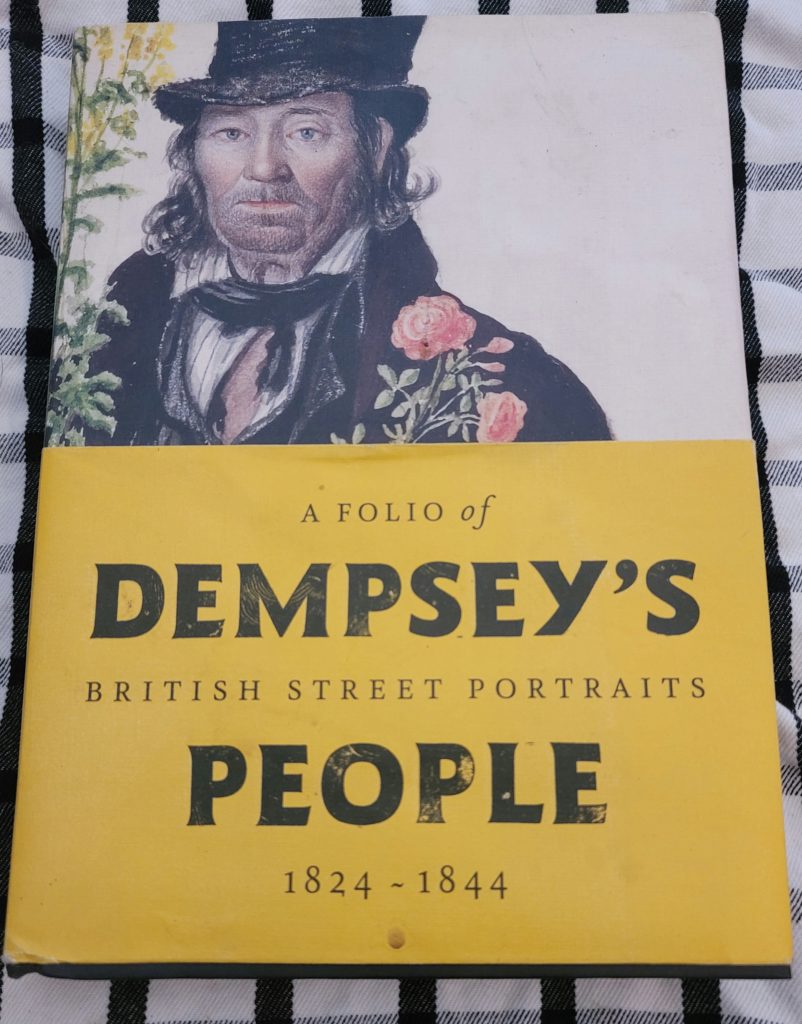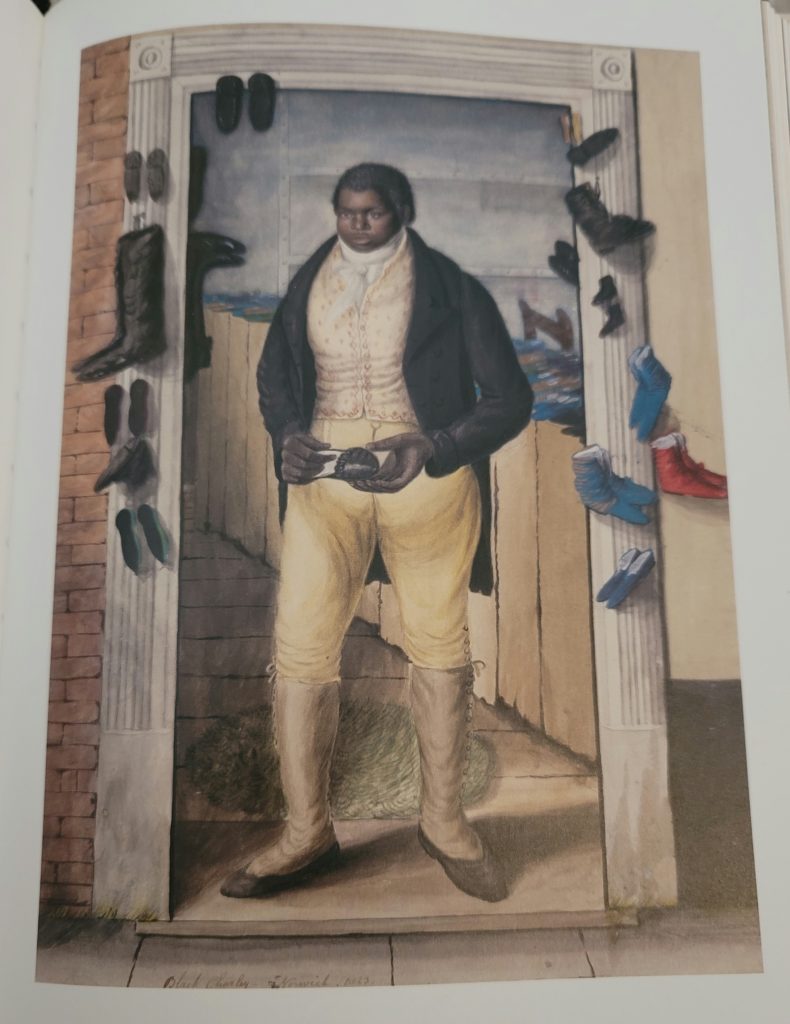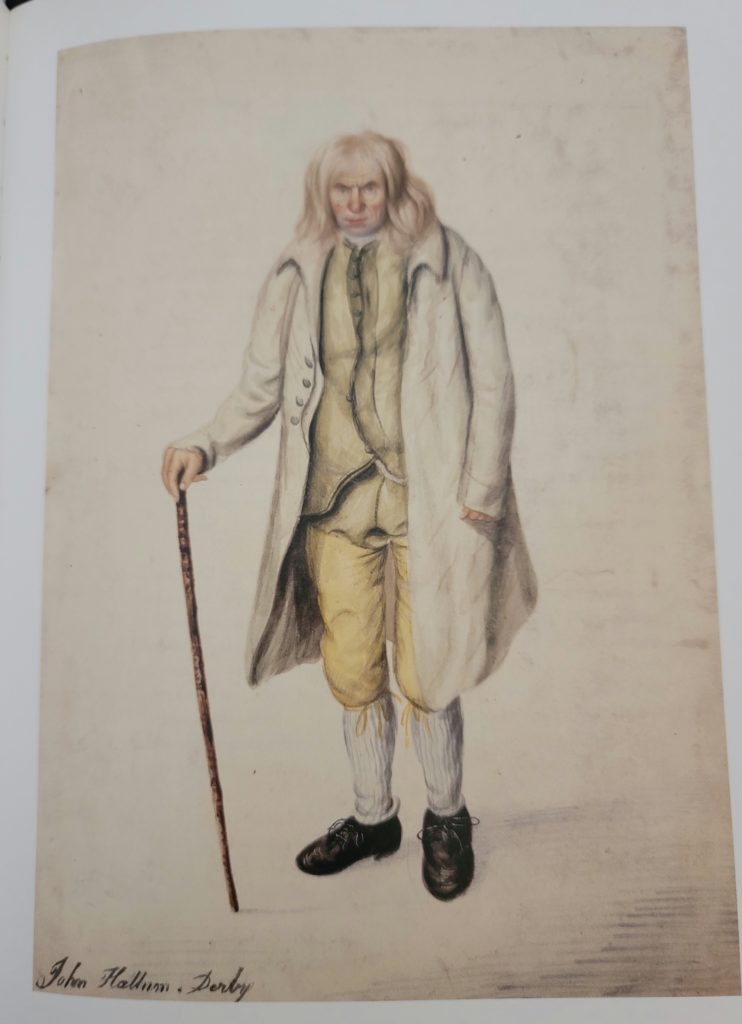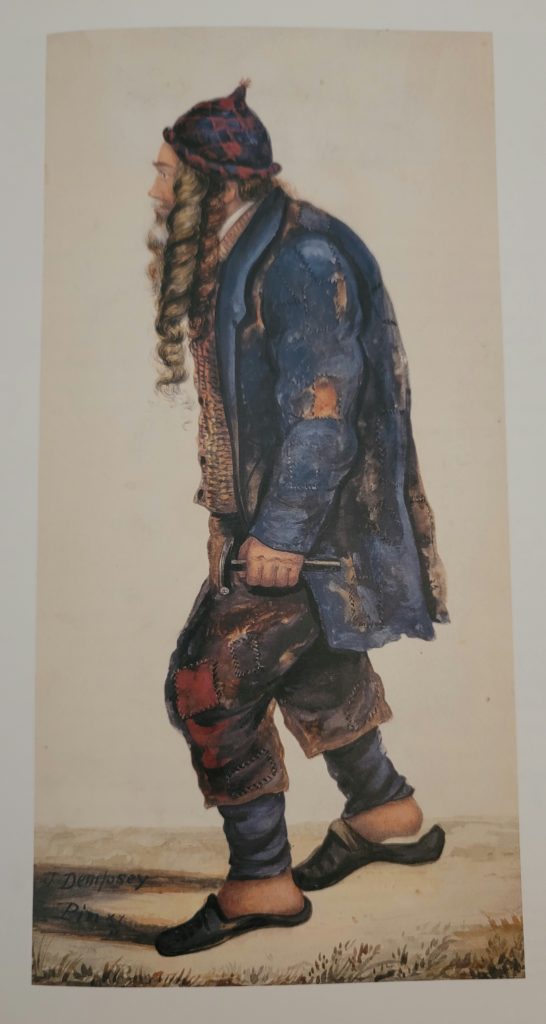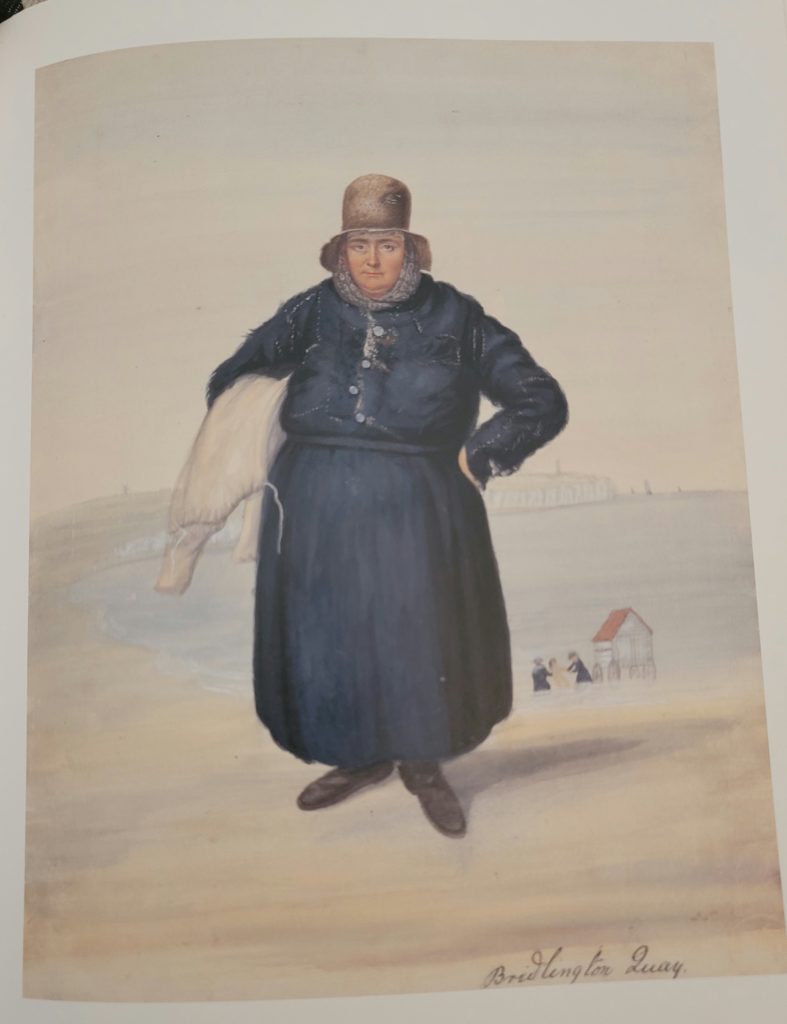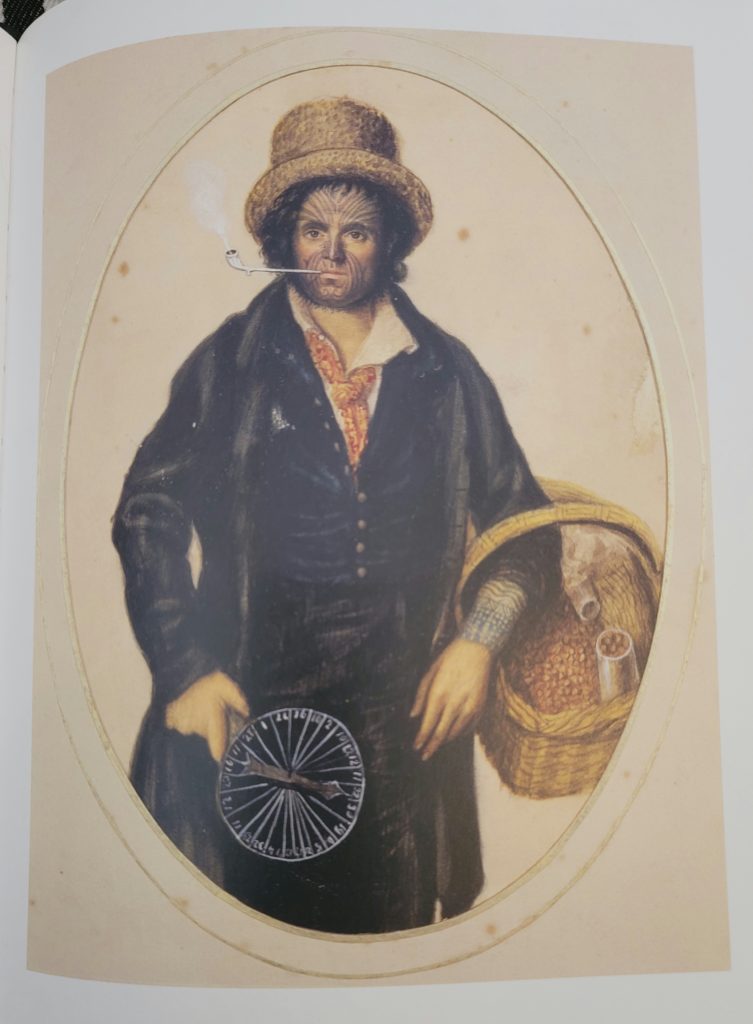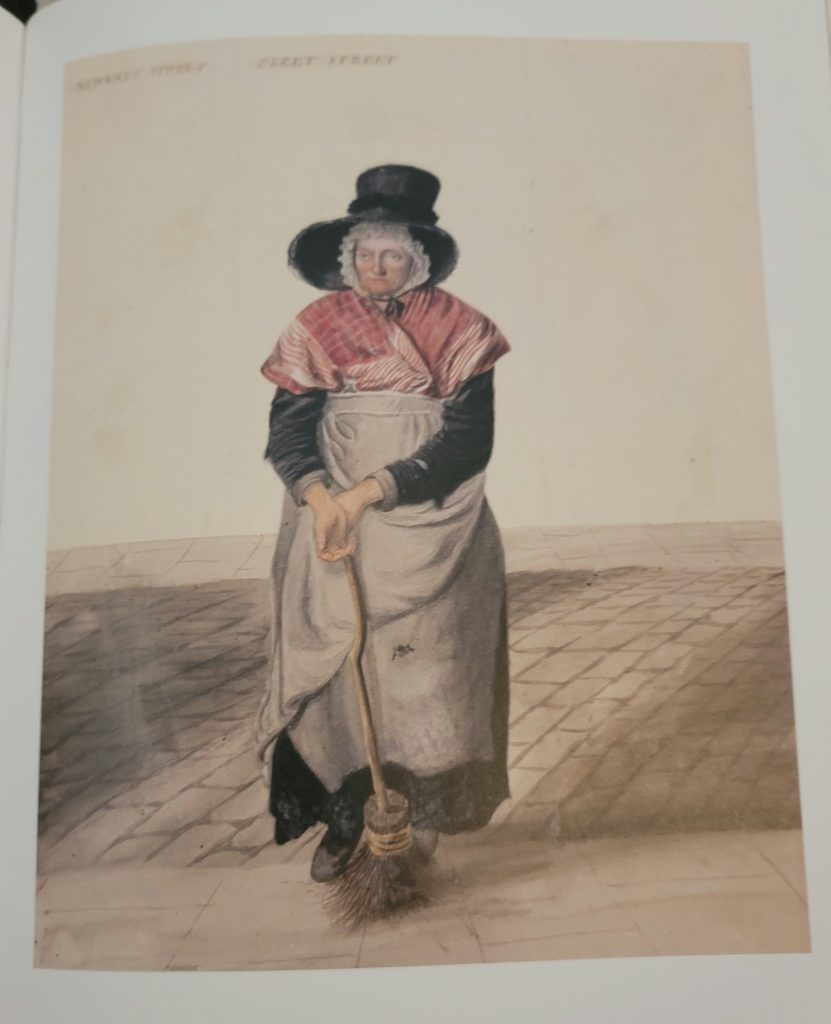A friend brought me this amazing book when she visited from Australia. The original folio is in a museum there, though all the portraits are of people from England. Some of the people were famous in their day (like street sweep, Charles McGee, of whom there are numerous portraits and period cartoons), others are obscure and only live on as “unknown Bun Man, Plymouth.”
I was somewhat surprised to discover that this folio was the source of the black cobbler who was circulating on Twitter awhile ago. I thought I’d share a few of the more interesting people who were captured by Dempsey.
This is John Hallam, of Derby. Not a rich man, he was mostly notable for having a reputation as an extremely good man who did what he could for his fellows. He had the distinction of having been granted access to several gentleman’s libraries in the district, and it was common for him to walk in, take a book, and walk out without saying a word to anyone.
Tommy Raeburn was the younger son of a local landowner. He inherited a piece of property that was completely surrounded by other holdings, and then he had a fight with the man who owned the only access road. He took the case to court and lost, whereupon he vowed to never cut his beard or hair until he received “justice”…which he never did. He was famous enough to have his own pamphlet and to have been featured in the Illustrated London News.
A strong, stout woman in a heavy blue bathing gown, with a scarf over her head and wearing a felt hat. She has the gown her customer would have worn under one arm.
One of the lowest jobs out there was match-seller. Like street-sweep and watercress-seller, this job was barely one step above vagrant. He is selling bundles of “brimstone matches”, slivers of wood dipped in sulphur, that were used to transfer flame from one source to another.
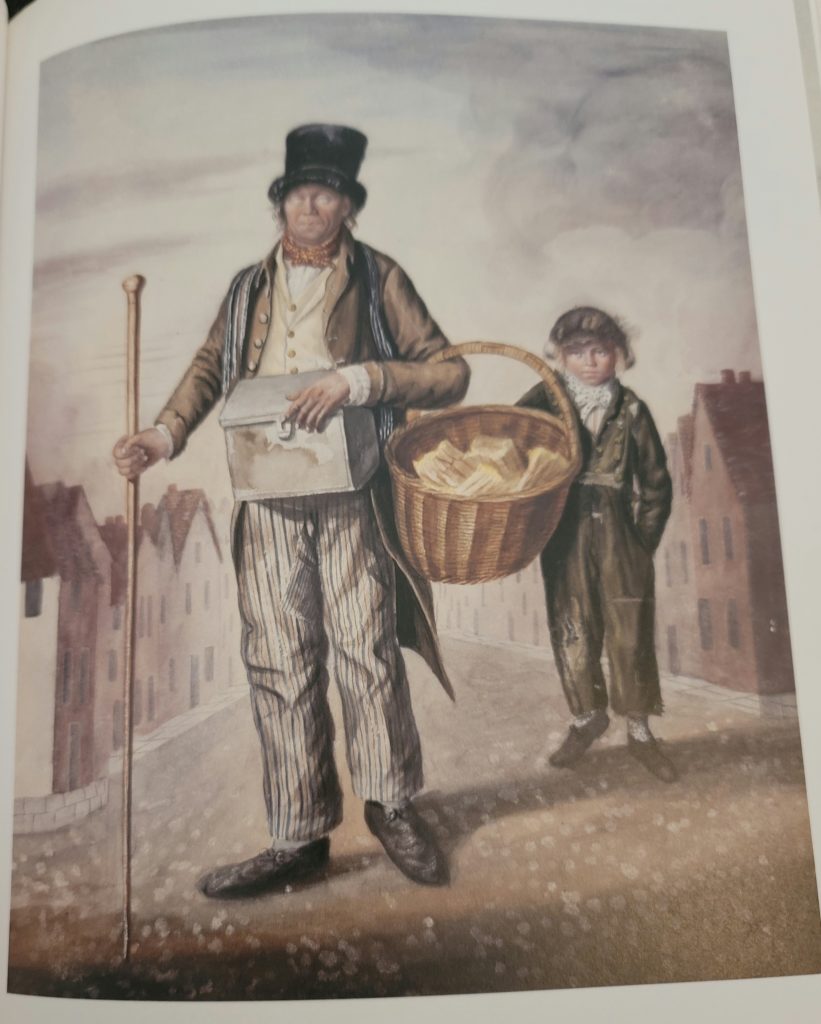
Mark Custings, known as Blind Peter, with his boy (who would have acted as his guide), Norwich, 1823
John Rutherford was a common sailor who spent some period of time with the Maori, and returned to England with moko tattoos. For a time, he displayed himself as a member of a “caravan of wonders”, before eventually returning to the Pacific.
Crossing-sweeper, London. No name recorded. She’s tattered and patched, but maintains all the basics of respectable appearance, right down to her wide-brimmed hat and handkerchief. She stands beside the crossing she keeps clean, her palm passively out in hopes of a tip.
Crossing-sweeper, London.

